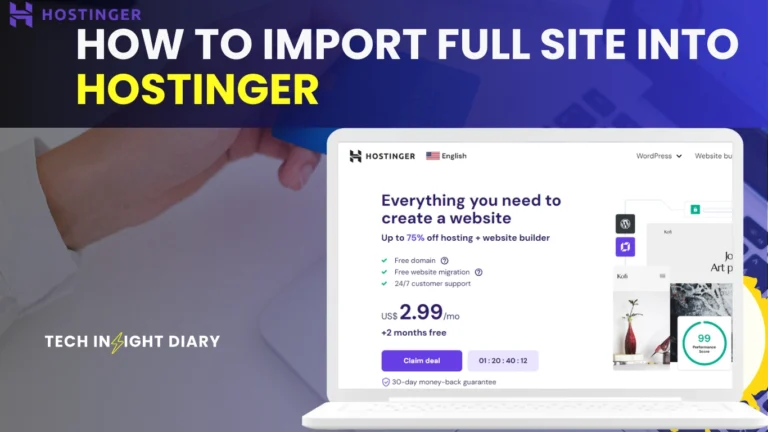To find products to sell on Shopify, research trending items and analyze market demand. Use tools like Google Trends and Oberlo.
Choosing the right products for your Shopify store is crucial for success. Start by identifying your niche and target audience. Research trending products using tools like Google Trends, which shows search volume and interest over time. Oberlo can help you find dropshipping products with high demand.
Analyze competitors to understand what’s popular and profitable. Validate your product ideas through customer feedback and market analysis. Ensure your chosen products align with your brand and customer needs. Consistent research and adaptation are key to staying competitive and growing your Shopify business.
Identifying Market Trends
Finding the right products to sell on Shopify is crucial. One way to succeed is by identifying market trends. This helps you understand what customers are currently interested in buying. By doing this, you can choose products that are in high demand.
Using Google Trends
Google Trends is a powerful tool. It shows what people are searching for online. Follow these steps to use Google Trends effectively:
- Visit Google Trends.
- Enter a product idea in the search bar.
- Analyze the search volume over time.
- Check related queries for more ideas.
If the search volume is rising, it’s a good sign. It means more people are interested in that product. Compare different products to see which one has a stronger trend.
INFO: How to Connect Aliexpress to Shopify: Step-by-Step Guide
Analyzing Social Media
Social media platforms are great for spotting trends. They give you real-time information on what’s popular. Here’s how to use social media for trend analysis:
- Follow influencers in your niche.
- Join relevant groups and communities.
- Monitor trending hashtags.
- Engage with posts to see what people are discussing.
Pay attention to what gets the most likes, shares, and comments. This usually indicates a popular trend. Tools like Facebook Insights and Twitter Analytics can help you gather more data.
By combining insights from Google Trends and social media, you can make informed decisions. This will increase your chances of choosing the right products to sell on Shopify.
Researching Competitors
Researching competitors is crucial for finding products to sell on Shopify. It helps you understand the market, identify gaps, and spot trends. By analyzing your competitors, you can make informed decisions and stay ahead in the market.
Identifying Key Players
Start by identifying key players in your niche. These are the brands or stores that dominate your market.
- Search Google for top brands in your niche.
- Use tools like SimilarWeb to find top competitors.
- Check social media for popular brands.
Look for stores with high traffic and engagement. These are your main competitors.
Assessing Their Products
Next, assess the products your competitors offer. This helps you understand their strengths and weaknesses.
- Visit their websites and note their best-selling products.
- Use tools like SEMrush to analyze their product keywords.
- Read customer reviews to understand product quality and issues.
Compare product features, prices, and customer feedback. This gives you a clear picture of what works in the market.
| Competitor | Best-Selling Products | Customer Reviews |
|---|---|---|
| Brand A | Product 1, Product 2 | Positive feedback, High ratings |
| Brand B | Product 3, Product 4 | Mixed reviews, Average ratings |
INFO: How to Change Currency in Shopify: A Step-by-Step Guide
By researching competitors, you can find profitable products to sell on Shopify. This helps you stay competitive and meet customer needs.

Finding Niche Markets
Finding the right products to sell on Shopify can be challenging. One effective strategy is to target niche markets. Niche markets have less competition and more dedicated buyers. This guide will help you explore and evaluate niche markets for your Shopify store.
Exploring Unique Niches
Unique niches can offer great opportunities. Start by thinking about your interests and hobbies. These can often lead to profitable niche ideas. Consider what you are passionate about. Look for problems that need solving in those areas.
- Identify your interests and hobbies
- Research problems within those interests
- Look for gaps in the market
Use tools like Google Trends and social media platforms to see what people are talking about. Keywords can reveal trending topics and potential niches. Check forums and online communities for common questions and needs.
| Tool | Purpose |
|---|---|
| Google Trends | Identify trending topics |
| Social Media | Discover popular discussions |
| Forums | Find common problems |
Evaluating Market Demand
After identifying a potential niche, evaluate its market demand. This will help you understand if the niche is worth pursuing. Start by checking the search volume of related keywords. High search volume indicates strong interest.
- Use keyword research tools
- Analyze search volume
- Check competition level
Consider using tools like Google Keyword Planner and Ahrefs. These tools provide valuable data on search volume and competition. Also, review product reviews and ratings. High ratings and positive reviews can indicate a healthy demand.
Lastly, assess the competition. Look at the existing stores in your niche. Study their products, prices, and customer reviews. This will give you a better understanding of the market landscape.
Utilizing Product Research Tools
Finding the right products to sell on Shopify can be challenging. Utilizing product research tools can simplify this task. These tools help identify trending products and understand market demands. They also provide insights into competitors and potential profit margins.
Top Tools To Use
Several tools can assist in finding top-selling products. Here are some of the best:
- Oberlo: Oberlo offers a large selection of products. It helps you import them directly to your Shopify store.
- Shopify’s Product Research Tool: This built-in tool provides data on trending items. It also gives insights into customer preferences.
- SaleHoo: SaleHoo is a powerful directory of suppliers and products. It helps you find profitable niches.
- Google Trends: Google Trends shows the popularity of search terms. This helps you identify trending products.
Interpreting Data
Understanding the data from these tools is crucial. Here’s how to make sense of it:
- Search Volume: High search volume indicates high demand. Look for products with growing interest.
- Competition Analysis: Check how many sellers offer similar products. Less competition often means better chances to stand out.
- Profit Margins: Calculate potential profit margins. Ensure the selling price covers all costs and leaves a profit.
Using these tools effectively can lead to successful product choices. Always analyze the data thoroughly before making decisions.
INFO: How to Change Shopify Domain Name: A Step-by-Step Guide
Sourcing Products
Sourcing products is a key step in setting up your Shopify store. The right products can drive sales and ensure customer satisfaction. You have two main options: domestic suppliers and international suppliers. Each has its own benefits and challenges.
Domestic Suppliers
Domestic suppliers are businesses within your own country. They offer several advantages:
- Faster Shipping: Products reach customers quickly.
- Quality Assurance: Easier to verify product quality.
- Ease of Communication: No language barriers.
However, domestic products can be more expensive. Use these tips to find domestic suppliers:
- Attend trade shows and meet suppliers in person.
- Search online directories like ThomasNet.
- Join industry-specific forums and networks.
International Suppliers
International suppliers are businesses outside your country. They offer unique benefits:
- Cost Savings: Lower production costs.
- Variety: Access to unique products.
- Scalability: Easier to scale up production.
But international sourcing can have challenges like longer shipping times and customs issues. Here are tips to find international suppliers:
- Use online platforms like Alibaba and Global Sources.
- Work with sourcing agents who know the market.
- Check supplier reviews and ratings carefully.
Choosing the right supplier is critical. Weigh your options and make informed decisions.

Validating Product Ideas
Finding the right products to sell on Shopify is crucial. Validating product ideas ensures success. Before investing, you need to confirm demand. There are several effective ways to do this.
Conducting Surveys
Surveys can provide valuable insights. Create simple, clear questions. Use tools like Google Forms or SurveyMonkey. Ask about preferences, buying habits, and price points.
Sample questions:
- Would you buy this product?
- How much would you pay?
- How often would you buy it?
Send surveys to potential customers. Share on social media, forums, and email lists. Collect responses and analyze the data. This helps understand market interest.
Running Test Campaigns
Test campaigns can gauge interest effectively. Create a landing page for the product. Use platforms like Google Ads or Facebook Ads. Drive traffic to your landing page.
Steps to create a test campaign:
- Set up a landing page.
- Create compelling ad copy.
- Define your target audience.
- Set a small budget.
Monitor the campaign results. Look at metrics like clicks, sign-ups, and conversions. High engagement indicates strong interest. This validates your product idea.
Here’s a simple table to summarize the key metrics to track:
| Metric | Description |
|---|---|
| Clicks | Number of clicks on your ad. |
| Sign-ups | People who sign up for more info. |
| Conversions | Actions taken by users. |
Using surveys and test campaigns helps validate product ideas. This ensures you invest in products with demand. Start small and measure everything.
INFO: How to Connect Shopify to Instagram: Boost Your Sales Effortlessly
Creating A Business Plan
Creating a business plan is crucial for your Shopify store. It acts as a roadmap for your business journey. A well-crafted plan helps you stay focused and organized. This guide will cover key sections of your business plan.
Setting Goals
Setting goals is the first step in your business plan. Goals give direction and purpose. They help measure your progress. Start by defining your long-term and short-term goals.
- Long-term goals: These are where you see your business in 5-10 years.
- Short-term goals: These are your targets for the next 1-2 years.
Make sure your goals are SMART:
- Specific: Clear and well-defined.
- Measurable: Can be tracked and measured.
- Achievable: Realistic and attainable.
- Relevant: Aligned with your business vision.
- Time-bound: Have a deadline.
Budgeting And Forecasting
Budgeting and forecasting are essential for your business plan. This involves planning your finances and predicting future earnings. It helps you manage your resources effectively.
Start with a budget. A budget outlines your expected expenses and income. Create a simple table for your budget:
| Category | Expected Expense | Expected Income |
|---|---|---|
| Product Costs | $2000 | |
| Marketing | $500 | |
| Website Maintenance | $300 | |
| Sales Revenue | $5000 |
Next, forecast your sales. Estimate your monthly sales for the first year. This helps you plan for growth and challenges.
Use these steps to create a solid business plan. This will set your Shopify store up for success.

Setting Up Your Shopify Store
Starting a Shopify store is a smart way to make money online. This guide will help you set up your store and get it ready for sales. Let’s dive into the main steps involved.
Choosing A Theme
Your store’s theme decides how it looks to customers. Shopify offers many free and paid themes. Choose a theme that matches your brand’s style.
To choose a theme:
- Go to the Shopify admin panel.
- Click on Online Store and then Themes.
- Browse the available themes and select one.
- Click Customize to make changes to the theme.
Customization allows you to change colors, fonts, and layout. Make sure your theme is mobile-friendly. A good theme will improve user experience and sales.
Adding Products
Adding products is the next crucial step. Here is how to do it:
- Navigate to the Shopify admin panel.
- Click on Products.
- Click on Add product.
- Fill in the product title, description, and other details.
Ensure to include high-quality images of your products. Use descriptive titles and SEO-friendly descriptions. This helps your products rank better in search engines.
Here is a table to help you organize your product details:
| Product Detail | Description |
|---|---|
| Title | Clear and concise name of the product |
| Description | Detailed information about the product |
| Images | High-resolution images of the product |
| Price | Cost of the product |
Be sure to set the right price for each product. Competitive pricing can attract more customers. Don’t forget to add product variants if you have different sizes or colors. This makes your store more user-friendly.
INFO: How to Add Reviews to Shopify: Boost Sales and Credibility
Marketing Your Products
Finding the right products to sell on Shopify is just the first step. To succeed, you must market your products effectively. An excellent marketing strategy will boost your sales and grow your brand. Below are some proven techniques to help you market your products.
Social Media Strategies
Social media platforms are great for reaching your target audience. Start by identifying where your audience spends their time. Create engaging content that showcases your products. Use high-quality images and videos. Engage with your followers by responding to their comments and messages.
- Facebook: Create a business page. Run targeted ads. Use Facebook groups to engage with potential customers.
- Instagram: Share visually appealing photos. Use Instagram Stories and Reels. Collaborate with influencers.
- Twitter: Tweet regularly. Use relevant hashtags. Engage in industry conversations.
- Pinterest: Create boards with your product images. Use keywords in your pin descriptions.
Email Marketing
Email marketing is a powerful tool for reaching your customers. Collect email addresses through your website. Offer discounts or free resources in exchange for emails. Segment your email list based on customer behavior.
- Welcome Emails: Send a welcome email to new subscribers. Introduce your brand and products.
- Product Updates: Inform your customers about new products. Use compelling subject lines.
- Promotional Emails: Send emails with special offers. Highlight limited-time deals.
- Abandoned Cart Emails: Remind customers about items left in their cart. Offer an incentive to complete the purchase.
Use A/B testing to optimize your email campaigns. Track open rates and click-through rates. Adjust your strategy based on the data.
INFO: How to Build a Shopify Store: A Step-by-Step Guide
Frequently Asked Questions
What Are The Best Selling Products On Shopify?
Trending products often include electronics, fashion items, and beauty products. Check Shopify’s trending list for the latest updates.
How Do I Find Profitable Products?
Use tools like Google Trends, Oberlo, and social media platforms. Analyze market demand and competition to find winning products.
Where Can I Source Products For Shopify?
You can source products from AliExpress, Oberlo, and local suppliers. Consider dropshipping for a low-risk option.
Conclusion
Finding the right products for your Shopify store takes research and strategy. Focus on market trends and customer needs. Utilize tools and resources to identify potential winners. Continuously analyze and adapt your product offerings. With persistence and the right approach, your Shopify store can achieve significant success.




